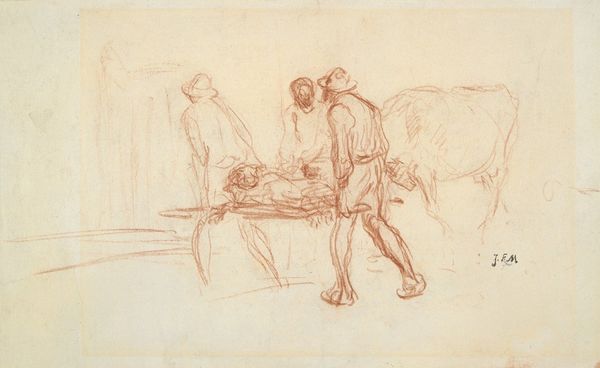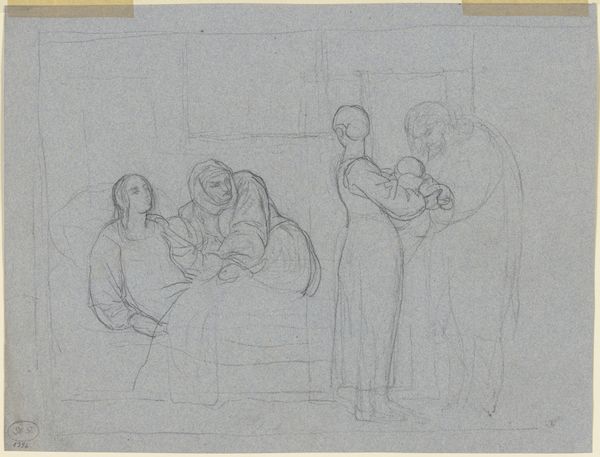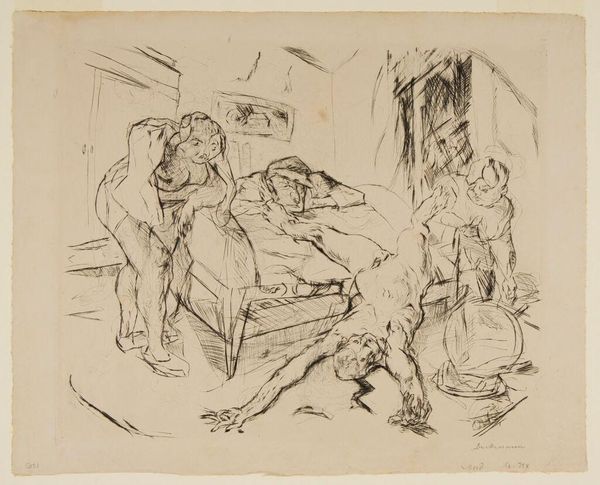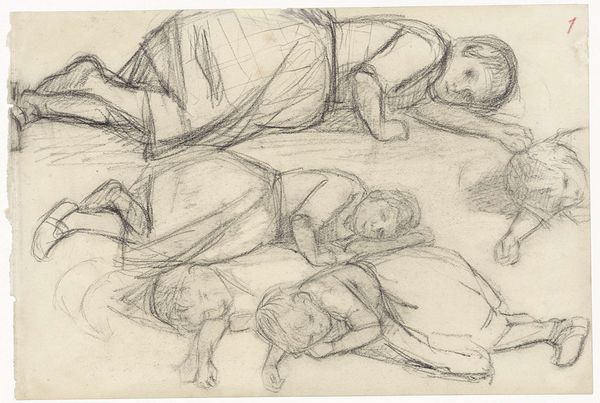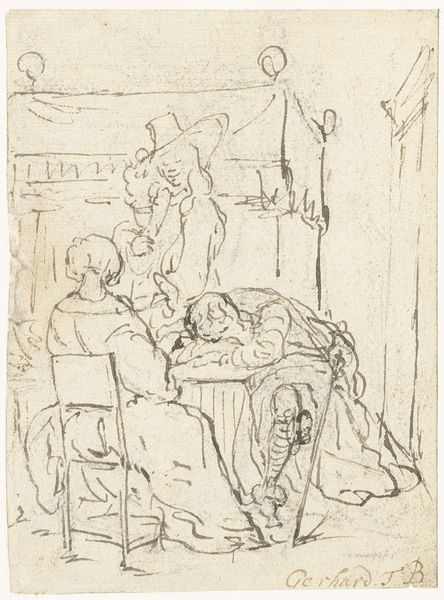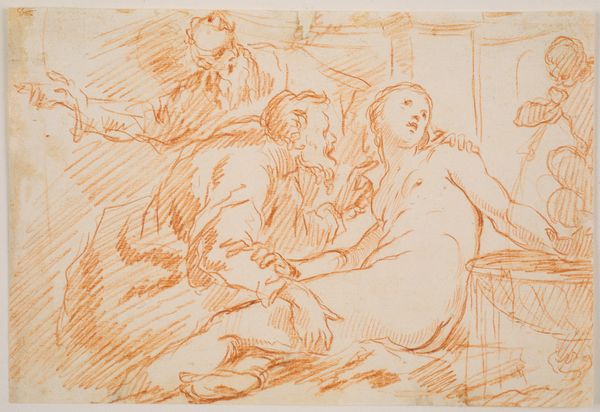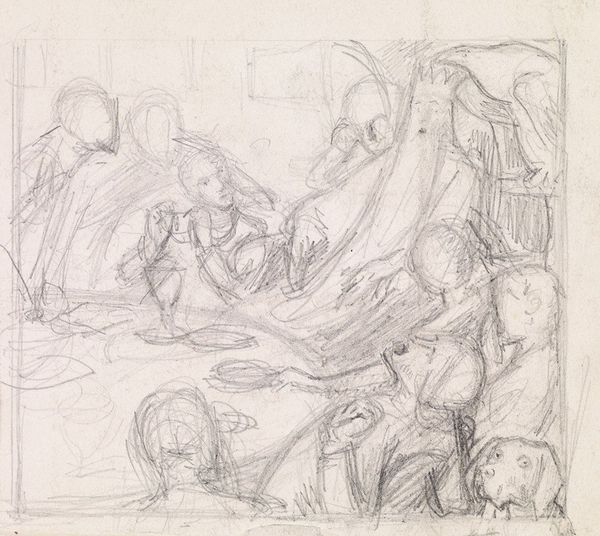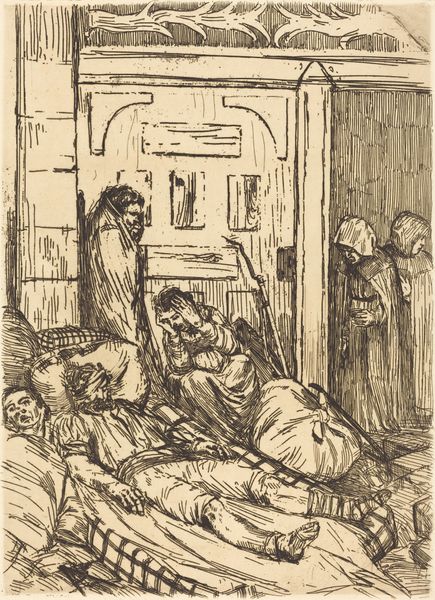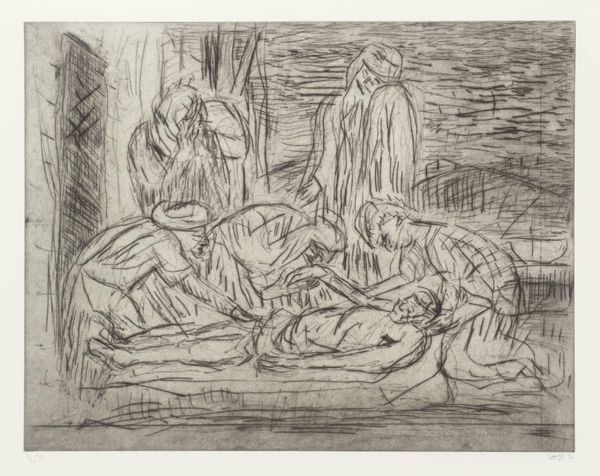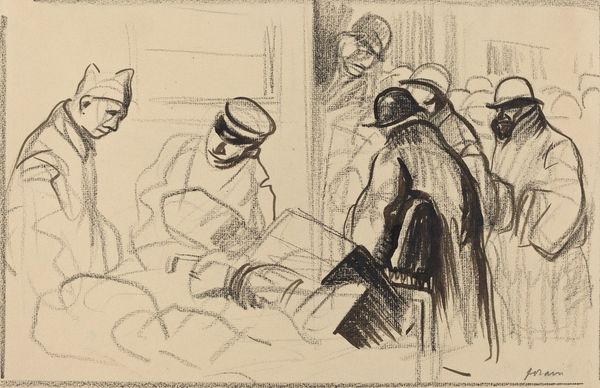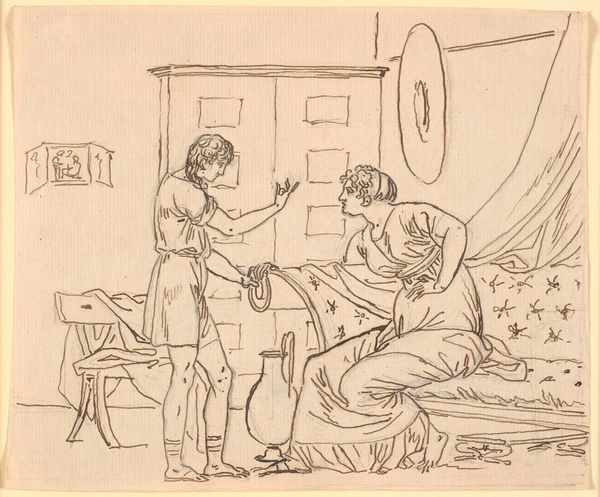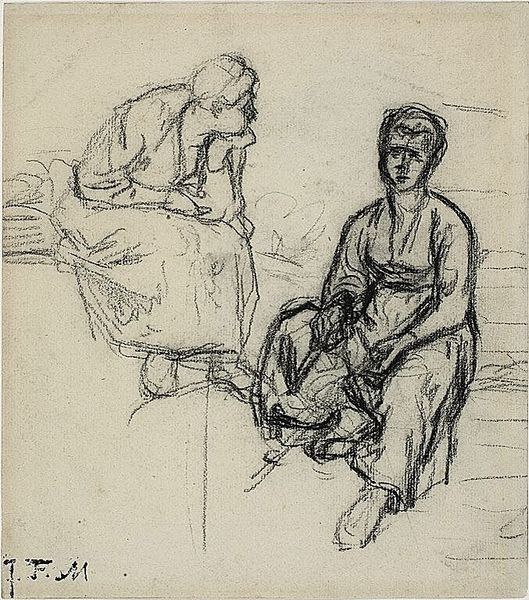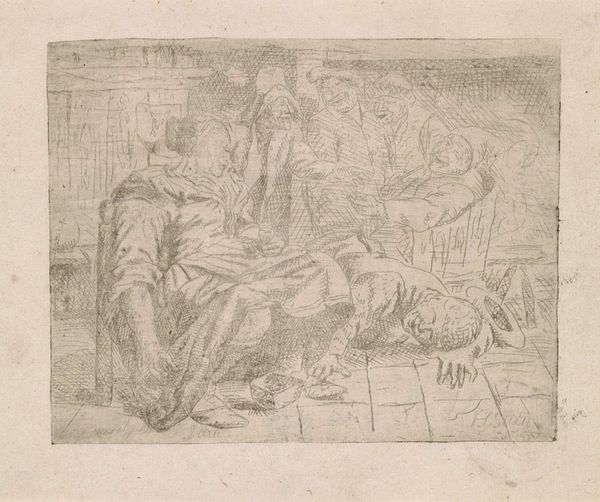
drawing, print, etching, intaglio
#
drawing
#
narrative-art
# print
#
etching
#
intaglio
#
figuration
#
history-painting
#
modernism
#
monochrome
Dimensions: plate: 20.3 x 25 cm (8 x 9 13/16 in.) sheet: 26 x 32.5 cm (10 1/4 x 12 13/16 in.)
Copyright: National Gallery of Art: CC0 1.0
Editor: Okay, so this print is titled "Samaritan" by Albert Edward Sterner, created around 1920. It's an etching, a type of intaglio print. What strikes me immediately is how stark and emotionally raw it feels. I am curious about your take on this? What sort of story or message do you see embedded in it? Art Historian: The visual weight definitely pulls towards themes of compassion and human connection. The term Samaritan, steeped in cultural memory, inherently brings to mind the biblical parable, right? Think about the enduring power of that story - it champions selfless aid to a stranger in need. Now, observe how Sterner uses stark lines. What effect do you think that monochrome aesthetic achieves here? Editor: It creates a mood of suffering, of being unwell, but there is this support system depicted around the bed which conveys empathy too. But I don't know why he used this exact tale; he didn't go for a clear retelling of it as I'd imagine it. Art Historian: That’s a fair point. He uses it to evoke a sense of morality or the unconscious recognition that help needs to be given to the weak, while being visually rooted in a modern era of printmaking. So how can we connect Sterner’s Modernist aesthetic, which leans away from traditional narrative painting, to these well-worn tropes in Christian morality tales? Editor: Perhaps he wanted to challenge the viewer? Show a classic moral paradigm through a modern lens, asking us if we can recognize universal goodness no matter the setting. I'd say the Samaritan archetype has real strength that this etching taps into! Art Historian: Exactly! By stripping away the specifics of time and place, the scene transcends the literal story, making it about universal human experience of suffering and kindness. That connection helps us all tap into those collective emotions more acutely. Editor: This conversation has given me a fresh view of how an old story can become a template for new interpretations and artistic messages! Art Historian: Likewise! Recognizing these lasting motifs helps reveal what remains constant across shifting cultural landscapes.
Comments
No comments
Be the first to comment and join the conversation on the ultimate creative platform.
